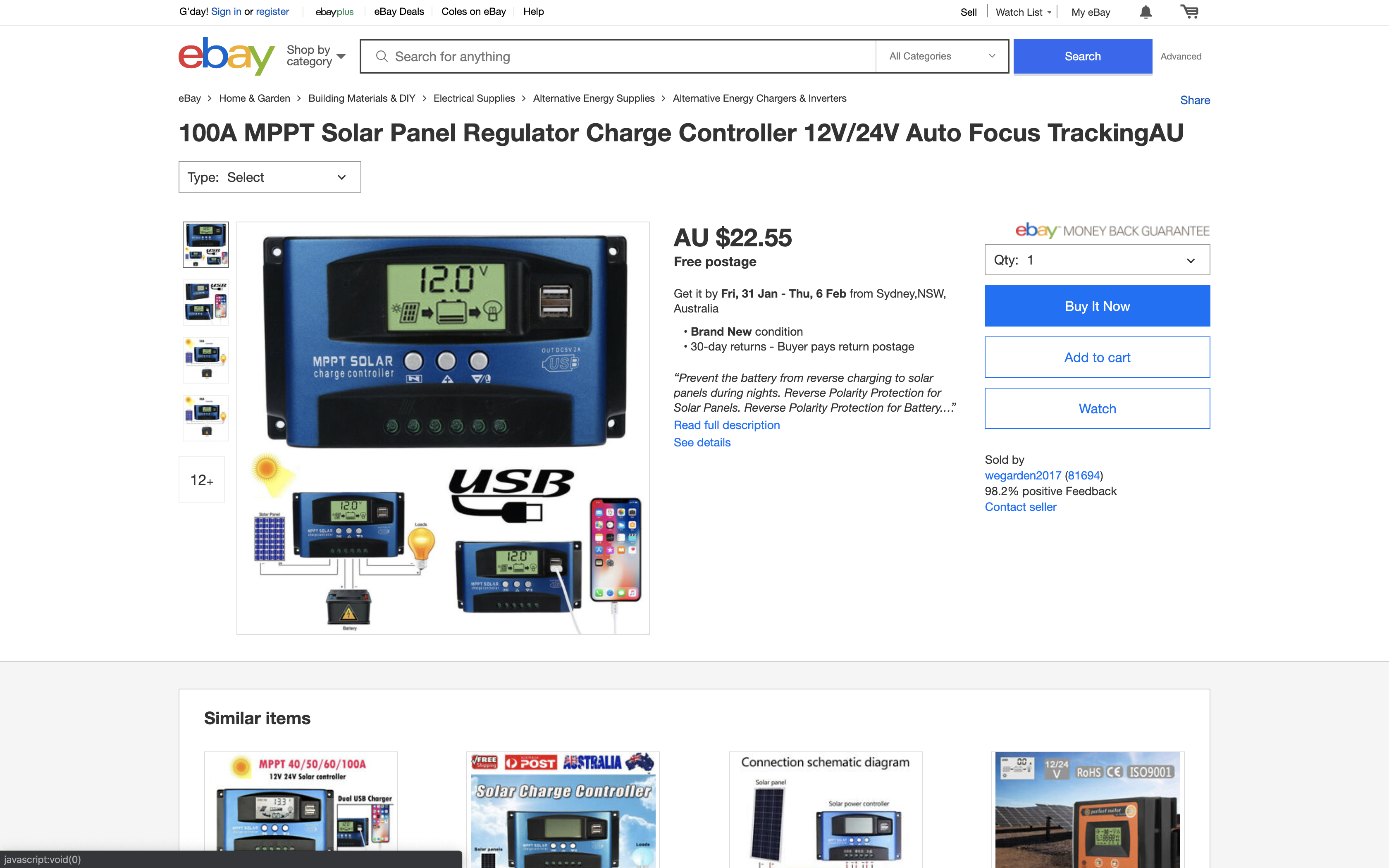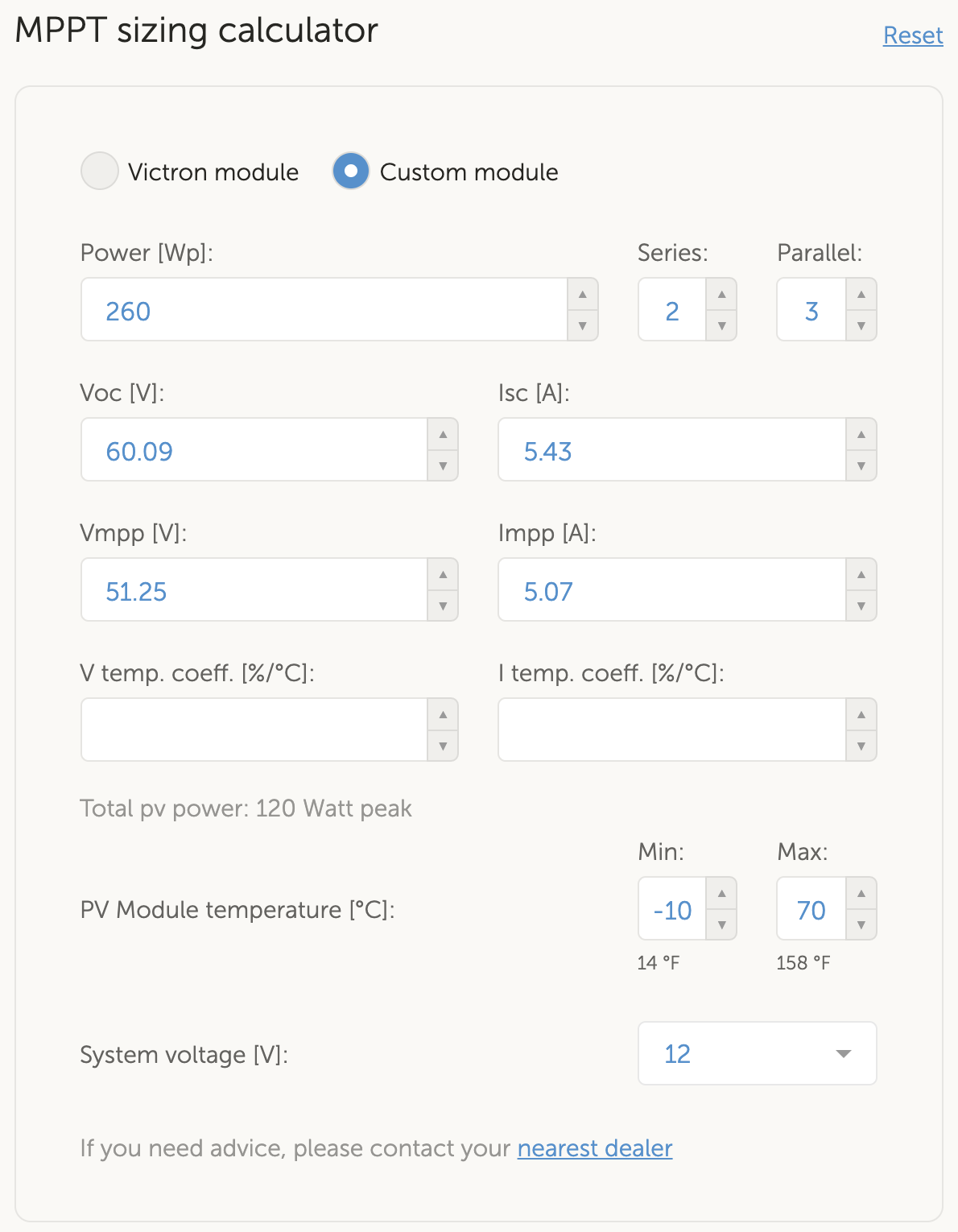Hi, I am just trying to get my head around this and wonder if someone can confirm it please?
For a 12-15vdc battery off grid system needing to charge through a charge controller via a solar panel array of course which the panels are rated at around 55Vdcmax.
With the cheaper Ebay MPPT controllers (link to example type bellow), they cut off the solar panels inputs if the solar panel voltages are above around 15Vdc, so effectively the panel would only charge the system when the panel voltage is within the 12vdc - 15vdc, effectively only for a VERY short time in the morning and again at sunset.
With a Victron charge controller like (link of example type below), to charge the 12-15vdc from the panels (55Vdc). Does the Victron charge controller cater for the full 0-55vdc from the panel or does it also have built in cut out solar voltage cut offs, resulting in the same issue as the cheaper Ebay charge controllers?
I guess I am looking to have some device which converts the 0-55Vdc to a more usable 12-15vdc range so as to charge the batteries. Is the Victron charge controllers able to do that, regardless of the voltage from the solar panels are producing?
Kind regards
John.
https://www.victronenergy.com.au/solar-charge-controllers/smartsolar-100-30-100-50



